On the 200th anniversary of her birth, today’s nurses are guided by her pioneering commitment to data and her devotion to healing.
By Anjetta McQueen Thackeray and Jeff Rogers
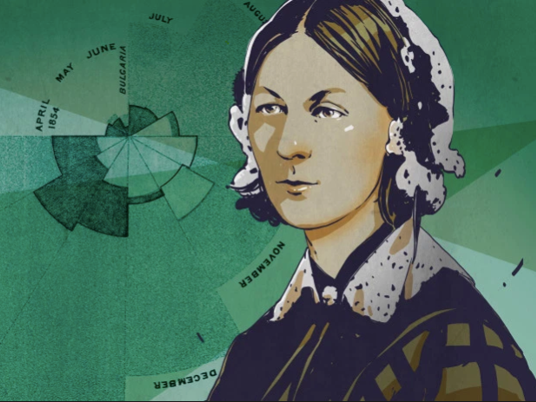 By the time nursing pioneer Florence Nightingale was in her early 30s, she was running a hospital. She had just gotten started. From there, she developed statistics and sanitation to cure diseases in a Crimean battlefield hospital while taking time to comfort wounded soldiers, then returned to Victorian England where she transformed health care—making lasting changes that have prepared today’s nurses for the great challenge of our time.
By the time nursing pioneer Florence Nightingale was in her early 30s, she was running a hospital. She had just gotten started. From there, she developed statistics and sanitation to cure diseases in a Crimean battlefield hospital while taking time to comfort wounded soldiers, then returned to Victorian England where she transformed health care—making lasting changes that have prepared today’s nurses for the great challenge of our time.
May 12 marks the 200th anniversary of Nightingale’s birth. In her honor, the World Health Organization has designated 2020 as the Year of the Nurse and the Midwife—it’s also become the year of COVID-19.
“Many of us planned to celebrate the Year of the Nurse,” said Becky Sassaman, RN, BSN, HNB-BC, a Denver-area nurse leader in UFCW Local 7. “We went from celebrating to being present in this moment, a moment we could not have imagined months ago.”
The legacy of Florence Nightingale is needed now more than ever. Nurse researchers, front-line caregivers, and national health care labor leaders agree Nightingale’s cautions, practices, and predictions have come to new light in the age of COVID-19.
“She is very much a contemporary,” said Denise Duncan, RN, president of UNAC/UHCP. “If she were alive today, she’d still be talking about infectious disease, hand washing, sanitizing, all of the things that are as pivotal today as they were when she was in Crimea.”
Real data, real news
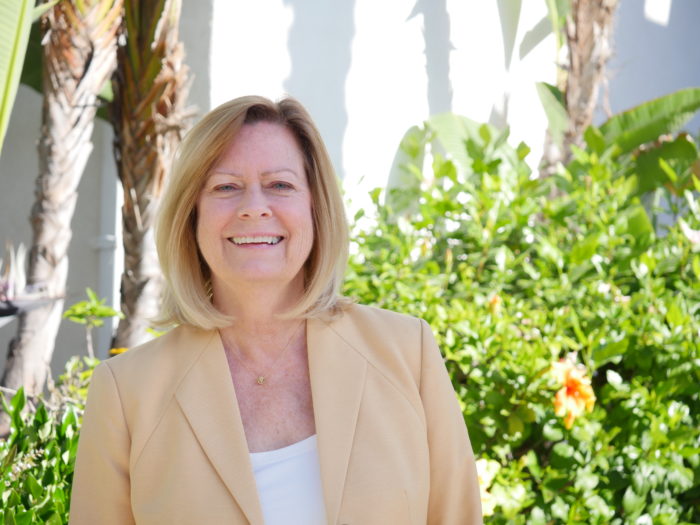
“When I first learned about Florence Nightingale using statistics to communicate what she was observing in her daily practice, that really piqued my curiosity,” said Dr. Ann Mayo, RN, BSN, MSN, DNSc, professor and nursing researcher, Hahn School of Nursing and Health Science, University of San Diego.
Mayo has studied the little-known but revolutionary role Florence Nightingale played in the development of applied health statistics and public health education during the Crimean War. The volunteer nurse arrived at a battlefield hospital in 1854 to find horrors such as wounded soldiers drinking water from a well with a dead, rotting horse in it.
She and her nurses cleaned up the ward and started collecting data at the bedside. Before they got there, the field hospital had a combined death rate from disease of 42.7 percent. Their sanitation measures dropped that to 2.2 percent. Nightingale, along with a statistician mentor, William Farr, developed the coxcomb charts—an enhanced pie chart—an early infographic to show the real story: more soldiers were dying of preventable diseases bred in filthy conditions than from the wounds of battle.
“She could use these to communicate to the public,” said Mayo. “It was a visual that really made a lot of sense to them. She went into hospitals in London and collected all kinds of statistics. She crunched all the numbers, published her reports, and she had a great impact on public health in London.”
A shorter learning curve
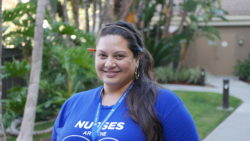
San Diego’s Sharp Memorial Hospital set up an all-volunteer COVID-19 unit drawn from multiple departments. “It’s phenomenal how quickly we became a team,” said Andrea Muir, RN, BSN, MSN-Ed, and UNAC/UHCP member. “We all had the same attitude—this has to be done, so I’ll do it.”
“There was no research at the beginning, no textbook for taking care of COVID patients, so we created our own specialty area, our own guidance, which arose organically from sharing what we learned with one another,” Muir said. “We tracked labs, fevers, oxygen rates, time frames of symptoms.”
“Our infectious disease doctors alerted us to three stages of the illness. Then we watched for increased oxygen needs or fever recurrence. If patients experienced the third, hyper-inflammatory stage, quick intervention might be needed because the decline could be shockingly rapid. We learned how to catch this and react quickly. Then we created a presentation and rounded in pairs through the hospital 24 hours a day, for a week, a kind of COVID roadshow, to help shorten the learning curve for other nurses who might need to care for these patients,” said Muir, describing the team’s work.

“If you think about nurses being interested in evidence-based practice and trending quality indicators, it’s not that much different from what Florence Nightingale did 130 or 150 years ago,” Mayo said, adding that more nurses should share their work with the public and help them understand what we need to do today to fight or treat diseases and viruses.
“What is so glaring is that we’ve not been paying attention,” Duncan said. “We have had serious outbreaks about every five to seven years. We’re just now waking up to it, but this pandemic was foreseen. It’s so important to resume serious conversations about public health.”
Lady with the Lamp
Nurses are trusted. The workforce is portrayed in a nurturing light. Nightingale is the most iconic symbol. She took the time to write and read letters for recovering soldiers as she visited them at night with her lantern. They called her the Lady with the Lamp.
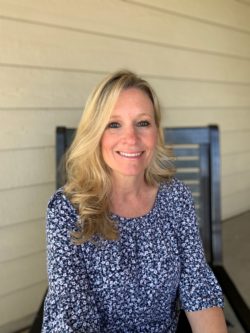
“Wearing the bonnet and carrying the lantern, she seems trapped in that female Victorian image,” Mayo said. “But she managed to break loose in terms of her intellect, her critical thinking.”
Sassaman said the Nightingale legacy has played out at today’s bedsides where nurses show up as professionals, leading together globally to heal, and using their holistic foundational nursing skill to care for the mind, body, and spirit of all: “We’ve offered caring, compassion, comfort and hope to our patients, their families and one another.”
The link between science and compassion is obvious: “It goes back to nurses remembering why they went into nursing, what keeps them going into work every day in today’s times,” Mayo said. “It’s because they wanted to help people.”
|
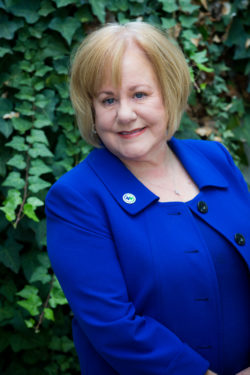
According to Duncan, nurses continue to channel that compassion into collective power to reshape the future of healthcare and improve how we deliver care to those who seek our services and fight to be recognized.
“As Florence Nightingale did, we embrace a larger notion of patient advocacy out in the wider world, not just in our hospitals,” said Duncan, a longtime union nurse and representative. Especially through unions, she added, nurses have raised a collective voice in local and national conversations around the future of medicine, health care, and public health policy.
“When health care professionals stand together with one voice, anything is possible,” said Duncan, who points to union advocacy as a strong vehicle for today’s nurses. “UNAC/UHCP was born more than 40 years ago from a vision of nurses joining together to help each other and our patients. All these years later, that’s what RNs and other health care professionals still do.”
Much more to do
Nightingale’s work has lasted the test of time. And just as she had to fight for respect then, nurses even now are praised more for their compassion and bravery than their direct knowledge and observational skill.
Today’s nurses are very interested in evidence-based practice and reading about new interventions, said Mayo, who has partnered with UNAC/UHCP to publish reports on medication errors.
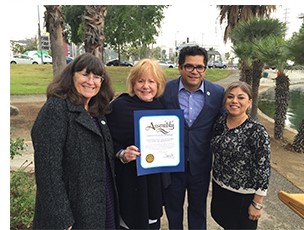
Across the country, nurses are involved in quality improvement projects. “We get in these fast-paced environments where medication is perceived to be the cure-all to everything,” said Mayo.
“Nurses are designing these programs on their units, coordinating these studies and spreading the data, whether it’s a unit-level or a hospital-level project,” Mayo said. “They were making posters and presenting those at national conferences. These nurses are absolutely the modern-day Florence Nightingales.”
Nurses are at the epicenter of pandemics, often calling for a look at the bigger picture beyond bacteria and viruses, but to the environments that patients lived and worked in. Nightingale helped transform sewer systems and used her family wealth to secure funding to disseminate public health information.
“Even 200 years later, there will always be a reason we have to invest in public health,” Duncan said. “Florence Nightingale was brilliant and timely. She was almost futuristic.”
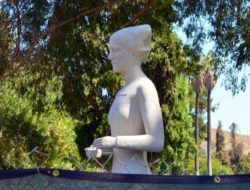
“We never move away from the whole conversation of infectious disease,” said Duncan, who remembers braving the front lines of the HIV epidemic. Nurses then, as now, went into uncharted territory, relying on their minds, hearts, and hands. Today, UNAC/UHCP can broaden advocacy for nursing through partnerships with national labor affiliations.
Sassaman is grateful to Florence Nightingale for elevating nursing to a recognized profession, for her leadership in global health care, and for her foundational work in holistic health. Sassaman is the Central Colorado Chapter Leader for the American Holistic Nurses Association.
“Two hundred years later, we are still walking this path together,” said Sassaman. “I hope they remember 2020 as the year when nurses bravely opened their arms and hearts to help heal the world through the uncertainties of a global pandemic.”
Who Was Florence Nightingale?
The Lady with the Lamp had an influential career, unique for a woman, and for a nurse. She was born May 12, 1820, in Florence, Italy, to wealthy English parents. She lived until August 13, 1910.
Her wealthy father sent her to school as he regarded education as important for girls, too. Despite her well-born status, she embarked on a mission to ease suffering in Victorian-era England. She ran a women’s hospital. She volunteered to lead a team of nurses to a Crimean War battlefield hospital and cleaned up the ward, the kitchen, the drainage system, and found time to write and read letters for recovering soldiers as she visited them at night with her lantern. She would become known as the Lady with the Lamp.
Praised by Queen Victoria for saving lives, she opened her first training school in 1860. She led a visionary charge for hospital cleanliness, collection of health data, advocating for women, and philanthropy to help the poor. She dared to follow her convictions, practice holistic healing, and bring high standards to the nursing profession which prevail today.
Source: Florence Nightingale Museum, London
UNAC/UHCP launched our first online continuing education webinar, “Happy Birthday Florence Nightingale: The Path to Evidence-Based Practice.” Here are excerpts from the one-hour course, presented May 12, 2020. For more information, contact education@unacuhcp.org.